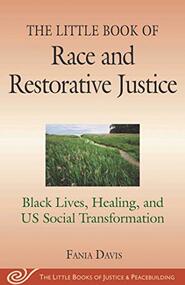 Ubuntu (Zulu pronunciation: [ùɓúntʼù])[1] is a Nguni Bantu term meaning "humanity." It is often translated as "I am because we are," or "humanity towards others," or in Xhosa, "umntu ngumntu ngabantu" but is often used in a more philosophical sense to mean "the belief in a universal bond of sharing that connects all humanity (https://en.wikipedia.org/wiki/Ubuntu_philosophy). The concept of restorative justice is the bringing of people together to address the wrongdoing and attempt to heal the harm. “While often mistakenly considered only a reactive response to harm, restorative justice is also a proactive relational strategy to create a culture of connectivity where all members of a community thrive and feel valued” (Davis, Fania E., 2019, pg. 25). Read Chapter 3 of The Little Book of Race and Restorative Justice by Fania E. Davis. Then, consider these questions.
“Within a talking circle, all members are equal and each one belongs to the circle, which itself represents the interconnectedness of its members and the cycles of life. The talking circle symbolizes a sacred space created where all who come, come to listen and respect the views of all others in the circle. A stick, stone, or feather (which symbolizes connectedness to the land) can be used to facilitate the circle. Whoever is holding the object has the right to speak and the others have the responsibility to listen” (https://facilitatoru.com/facilitation/how-to-use-talking-circles-for-deep-communication/).
1 Comment
Jane Bateman
8/9/2020 09:58:00 pm
Make sure to watch the video about Restorative Justice on the main Race and Justice page. The video explains restorative justice quite well.
Reply
Leave a Reply. |
The Racial Justice Committee @ PMC
Archives
October 2021
Categories |
 RSS Feed
RSS Feed
